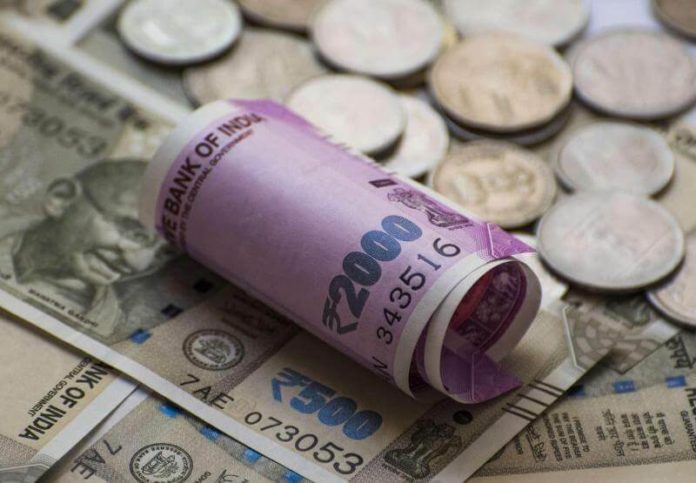Demonitisation not only ended the reigns of hawala and black marketers, it is now increasing the value of rupee and bringing down the price of everything that people purchase regularly. With digital banking picking up steam, analysts say India’s economy will be transformed completely in the years to come. That’s why Vivek Vadwa, an American economic analyst, has compared the demonitisation to America’s interstate highways and the Great Wall of China.
By Narayan Ammachchi
Critics of demonitisation have now run into hiding, with the economy continuing to grow at around 7 percent in terms of GDP (gross domestic product) and people seeing the price of everything at a level that they can afford.
By the end of March, RBI will announce precisely how much amount of banned currency notes were deposited in banks. Currency that did not return to banks will be considered a dividend for the government. Analysts say the government will get between two and three lakh crore rupees in dividends.
The cash ban pushed down inflation significantly, bringing the price of every goods to a level that the common man can afford. For an instance, dal prices, hovering above 250 rupees per a kilogram, came down to 75 rupees. Interest rates went down so small and medium enterprises can borrow cheap loan to bolster their business. Until yesterday, these businesses were classified as the ‘”informal economy”, which comprises of small manufacturing units, street vendors and mom-and-pop stores.
More anything else, the reduction in unaccounted money sent a powerful message to international investors about India’s commitment to transparency and better tax management.
Digital banking has grown several fold after the demonetization, with e-wallets such as PayTm and BHIM app, which enables transferring money through a mobile phone, becoming a huge hit.
There is no doubt that the reduced use of cash and encouraging more electronic transactions will help create a digital trail of all transactions and curb the creation of black money. This will, in effect, increase the tax base and add to tax revenue.
“In the long run, demonetization and GST could result in a wider tax base and greater participation in the formal economy. This should benefit India’s business climate and financial system in the long run,” said US ratings agency S&P.
Chasing the Money Hoarders
Meanwhile, Income Tax Department has continued to issue notices to people who deposited more than 5 lakh rupees into their accounts following the November 8 announcement. Nearly 6 lakh people were reported to have been received a notice. More will get such notices in the days to come, according to the Revenue Department.
Considering latest reports, more than 6000 crore rupees have come into government coffers in tax from people who admitted to owning unaccounted wealth. That’s of course a tip in the iceberg, because the investigation into deposits has just begun. The tax department has also referred 526 cases to the Central Bureau of Investigation (CBI) and the Enforcement Directorate (ED) to probe other crimes like money laundering and corruption.
By the time this exercise completes, the government will have collected more than a lakh crore in tax, throwing hundreds of people behind bars.
Declining Interest Rate
The biggest beneficiaries of the note ban are the banks. Before the demonitisation, banking sector was buckling under the weight of bad debt. But the currency ban brought in a huge amount of money into the financial system, enabling banks to lend at cheaper rate.
Not only did lending rates get slashed, the overnight marginal cost of funds-based lending rate (the minimum interest rate below which a bank cannot lend) fell to 7.75% from 8.65%. Meanwhile, three-year loan rates came down to 8.15% from 9.05%. While these percentages may seem small, it was a huge turnaround, which were reeling under the pressure of the bad loans.
State Bank of India (SBI), the country’s largest lender, cut its marginal cost of funds-based lending rate (MCLR) across all tenors by 90 basis points (bps), the steepest cut in several years. MCLR is the benchmark lending rate at which a bank prices all its loans. Just about every bank followed suit. Other public sector lenders Punjab National Bank (PNB) and Union Bank of India (UBI), too, brought down the benchmark interest rate.
Over the coming months, interest rates are expected to be decreased to less than 5 percent. That will be a huge boost for enterprises and employees alike, because now home loan cost is going to go down sharply.
On 31 December, the Prime Minister Narendra Modi announced a slew of measures for helping the poor, lower middle classes, senior citizens and small businessmen. His offers included cheaper loans for housing, businesses and stable savings rates for senior citizens.
Box Item
Digital Transaction:
Today, there is a committee comprising six chief ministers and experts such as Nandan Nilekani, former chairman of the Unique Identification Authority of India, to chart out a road map for the adoption of digital modes of payment.
The IDFC bank has recently unveiled its most awaited Aadhaar payment app, which will enable people to pay everything they purchase at shops with their fingertips. The BHIM app, released by the prime minister himself, makes it easy to transfer money from a mobile phone to any bank account at the flip of few buttons. It is free and quick. Moreover, people who have no access to the Internet can also use it in any remote corner of the country.
Now, traders with a turnover up to 2 crore rupees can enjoy a huge tax-break if they carry out most of their financial transaction digitally.
Box Item
Digital Transaction:
Today, there is a committee comprising six chief ministers and experts such as Nandan Nilekani, former chairman of the Unique Identification Authority of India, to chart out a road map for the adoption of digital modes of payment.
The IDFC bank has recently unveiled its most awaited Aadhaar payment app, which will enable people to pay everything they purchase at shops with their fingertips. The BHIM app, released by the prime minister himself, makes it easy to transfer money from a mobile phone to any bank account at the flip of few buttons. It is free and quick. Moreover, people who have no access to the Internet can also use it in any remote corner of the country.
Now, traders with a turnover up to 2 crore rupees can enjoy a huge tax-break if they carry out most of their financial transaction digitally.
Box Item
Rising Factory Output
During the previous regime, the country’s industrial output declined considerably. Demonitisation not only kick-started the growth of the sector but also strengthened them with cheaper capital (loan).
Our factory output, as measured by the index of industrial production (IIP), rose 2.7% in January. Factory output had contracted by 0.1% in December after growing 5.7% in November, the fastest pace in 13 months, driven mainly by a positive base effect.
Data released by the Central Statistics Office (CSO) showed that in January, mining, manufacturing and electricity output increased.While mining output grew 5.3%, manufacturing rose 2.3% and electricity generation gained 3.9%.
Capital goods production—a key indicator of investment demand in the economy—also rebounded, growing by 10.7% in the month although economists were skeptical whether this trend would be sustained.
Smile on Private Sector Employees
As part of promoting digital transaction, the government made it mandatory for all businesses, small or big, to pay employee salary through banks. In other words, employers are now paying their employees by depositing their wages directly into their bank accounts.
Not did it bring transparency, it also protected employees from discrimination. Many businesses, particularly private education institutes, never actually paid the same amount salary they claimed in their financial reports submitted to the tax department.
Now they are bound to pay the promised amount in full, because the Tax Department can now see how money they paid to their employees. This is transformative move, because today even the tea garden workers in Assam, milk suppliers in Gujarat and textile workers in Tamil Nadu are being paid through the bank.
In addition, government has also recently increased the minimum wage by a record 45 percent. This is the biggest boon for the country’s unorganized laborers who account for 92% of our total workforce.
Since their their wages were paid in cash and their employment not recorded, they never enjoyed the benefits of minimum wage, health care, and pension or provident fund.
Box Item
Why demonitisation?
1) To identify black money that fueling inflation, causing an upsurge in everything people purchase.
2) Cash ratio in the economy was exceeding 12 percent.
3) With demonitisation, the goods and services tax (GST) system would have failed with the money continuing to flow seamlessly from the formal to informal economy. Informal economy does not pay tax, nor is its income properly taken into account while calculating the GDP.








